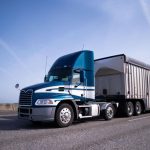In the landscape of urban development, traditional automotive parking solutions face numerous challenges, from space constraints to environmental concerns.
However, amidst these challenges emerges a transformative solution: commercial carport structures. These innovative structures are poised to revolutionize traditional automotive parking, offering a blend of functionality, sustainability, and efficiency.
Understanding Traditional Automotive Parking
Traditional automotive parking has long been a staple of urban and suburban landscapes, providing a necessary infrastructure for vehicle storage and accessibility. This section delves into the fundamentals of traditional automotive parking, exploring its characteristics, challenges, and common practices.
1. Characteristics of Traditional Automotive Parking
Traditional automotive parking encompasses a range of configurations and facilities, including:
- Surface Parking Lots: Open-air lots where vehicles are parked side by side, often delineated by painted lines or markers.
- Multi-Level Parking Garages: Structures with multiple levels or floors designed to accommodate a larger number of vehicles in a compact footprint.
- Street Parking: On-street parking spaces along roads and thoroughfares, regulated by signage and parking meters.

2. Challenges Associated with Traditional Parking
While traditional automotive parking solutions serve a crucial function, they also pose several challenges:
- Space Constraints: Surface parking lots require significant land area, limiting their feasibility in densely populated urban areas where space is at a premium.
- Environmental Impact: Surface parking lots contribute to impervious surface runoff, leading to stormwater pollution and degradation of water quality.
- Traffic Congestion: Inefficient parking layouts and limited parking availability can contribute to traffic congestion, especially in busy urban centers and commercial districts.
3. Solar Panels in the Automotive Industry
In the automotive industry, the integration of solar panels presents a significant opportunity to embrace sustainable practices and reduce reliance on traditional fossil fuels. Solar panels can be incorporated into vehicles in various ways, such as:
Solar Charging Power Station: A solar charging power station is a highly innovative solution that offers both portability and sustainability in power supply. By harnessing the energy of the sun, this device can provide electricity to charge and power various devices without the need for traditional power sources.
- Auxiliary Power Systems: Solar panels can power auxiliary systems in vehicles, such as ventilation fans, interior lighting, or entertainment systems.
- Hybrid Vehicles: In hybrid vehicles, solar panels can assist in charging the auxiliary battery or powering ancillary systems, further optimizing fuel efficiency and reducing emissions. This integration contributes to the overall sustainability of hybrid propulsion systems.
Introducing Commercial Carport Structures
Introducing commercial carport structures marks a significant evolution in parking solutions, offering a blend of innovation, functionality, and sustainability. This section provides an overview of commercial carport structures, exploring their design, benefits, and applications.
Design and Structure
Commercial carport structures feature a distinctive design characterized by a canopy-like structure supported by columns. This design provides covered parking for vehicles while maximizing space utilization and efficiency. If you’re looking to get a commercial parking structure then you may visit State Roofing 1 LLC of Florida.
Benefits of Commercial Carport Structures
Commercial carport structures offer a multitude of benefits compared to traditional parking solutions:
- Maximized Space Utilization: By utilizing a vertical approach to parking, it maximize space utilization, allowing for more vehicles to be parked within a smaller footprint.
- Environmental Sustainability: Many carport structures are equipped with solar panels integrated into their canopy, harnessing renewable energy to power lighting and other amenities.
- Enhanced User Experience: The covered parking provided by carport structures protects vehicles from the elements, enhancing user comfort and preserving vehicle aesthetics.

Applications of Commercial Carport Structures
Commercial carport structures find applications across a wide range of sectors and environments:
- Commercial and Retail: It provides covered parking for customers and employees at commercial and retail establishments such as shopping centers, office complexes, and restaurants.
- Educational Institutions: It offers parking solutions for students, faculty, and staff at colleges, universities, and schools, helping alleviate parking congestion on campus.
- Transportation Hubs: They serve as parking facilities at transportation hubs such as airports, bus terminals, and train stations, providing convenient and secure parking for travelers and commuters.
Enhancing Environmental Sustainability
Enhancing environmental sustainability is a fundamental aspect of commercial carport structures, setting them apart as innovative solutions in the realm of parking infrastructure.
1. Integration of Renewable Energy
One of the primary ways commercial carport structures enhance environmental sustainability is through the integration of renewable energy technologies, notably solar power.
- Energy Independence: Solar-powered carport structures promote energy independence by generating electricity on-site. This reduces dependence on centralized power grids and mitigates the risks associated with energy supply disruptions or price fluctuations.
- Promotion of Clean Energy: By showcasing the viability of solar energy in a practical application, commercial carport structures help promote the adoption of clean energy technologies.
2. Shade and Cooling Benefits
In addition to generating clean energy, commercial carport structures provide shade and cooling benefits that contribute to environmental sustainability:
- Energy Savings: The shaded parking offered by carport structures reduces the need for air conditioning in parked vehicles, resulting in energy savings and reduced electricity consumption.
- Preservation of Vehicle Interiors: By shielding vehicles from direct sunlight, carport structures help preserve the interiors of parked vehicles, including upholstery, dashboard components, and electronic systems.
3. Material Selection and Lifecycle Considerations
Environmental sustainability is also reflected in the material selection and lifecycle considerations of commercial carport structures:
- Durable and Recyclable Materials: Carport structures are typically constructed using durable materials such as steel or aluminum for the framework and polycarbonate or fabric for the canopy.
- Long-Term Durability: Commercial carport structures are designed to withstand harsh environmental conditions, including wind, rain, snow, and UV exposure.

Conclusion
In conclusion, commercial carport structures represent a transformative solution to traditional automotive parking challenges.
As urban centers continue to grapple with the pressures of population growth and environmental degradation, embracing commercial carport structures offers a sustainable and efficient pathway toward the future of automotive parking.










